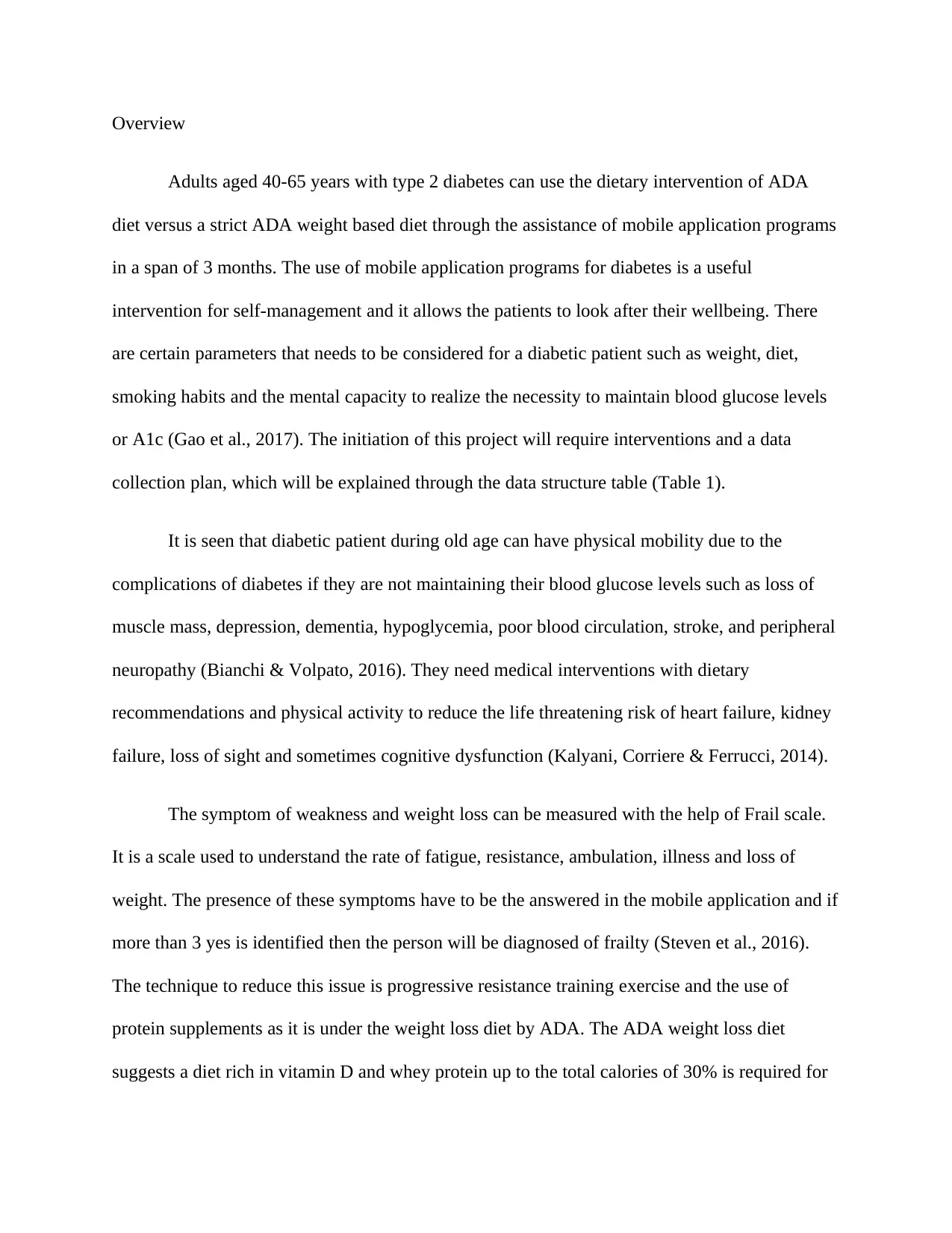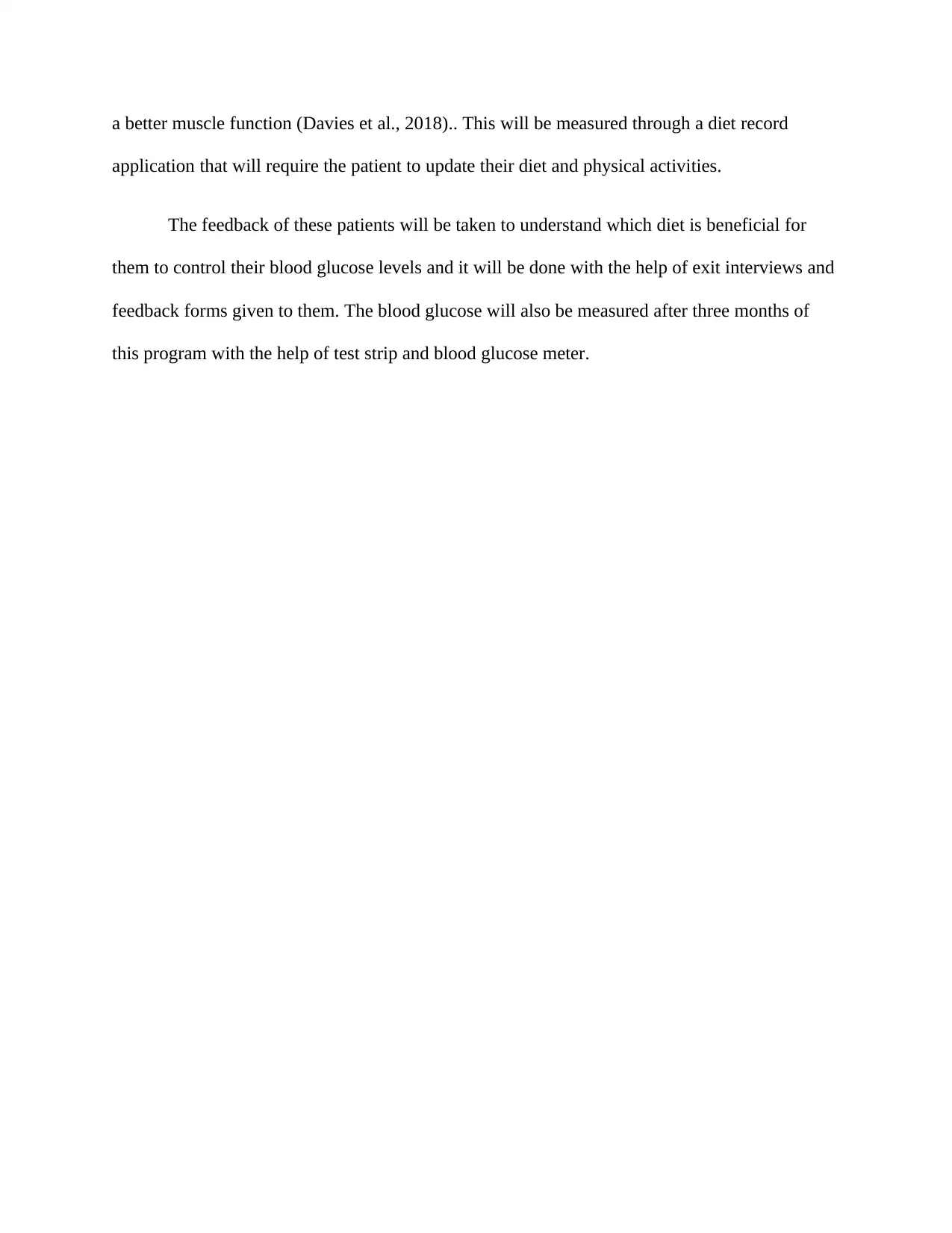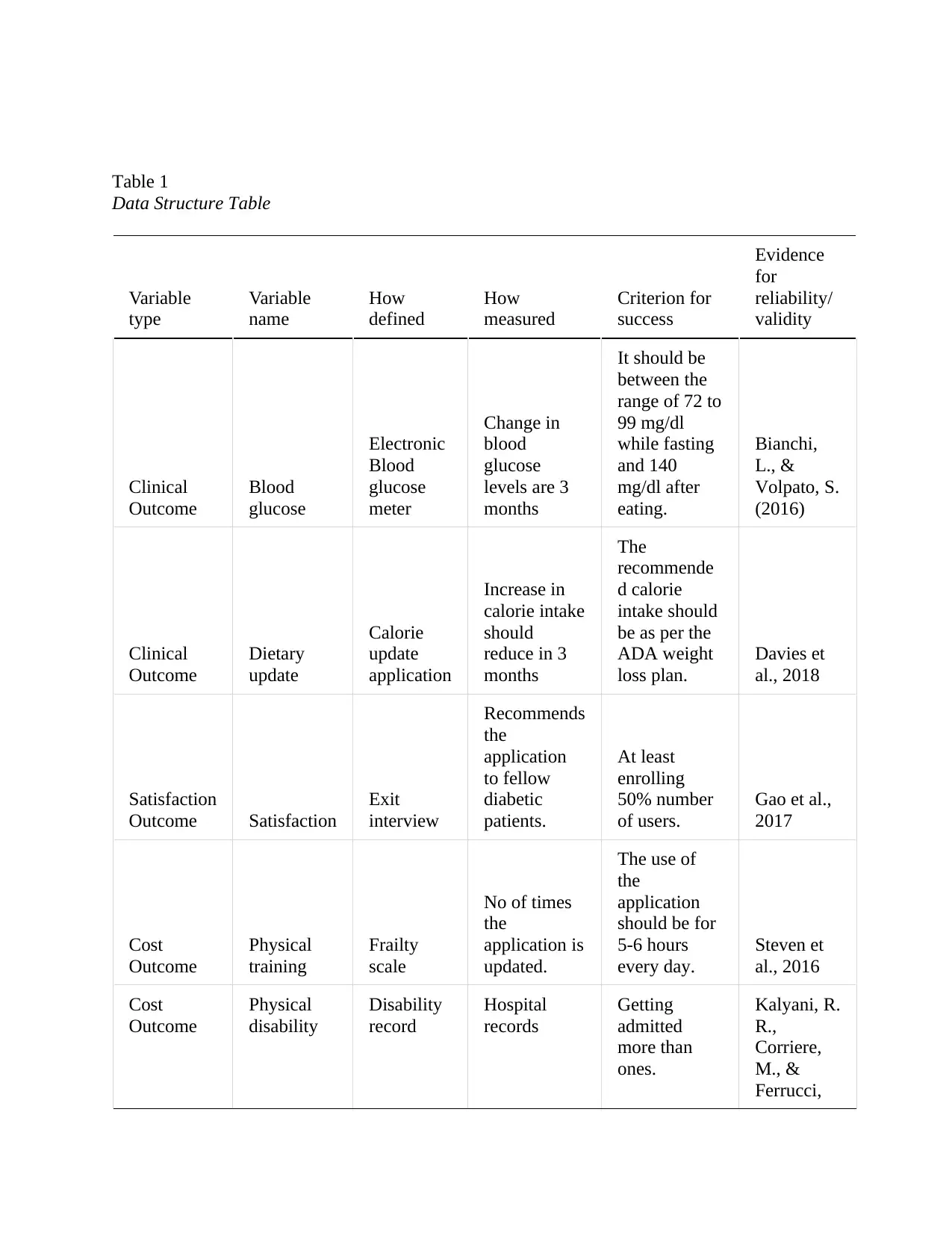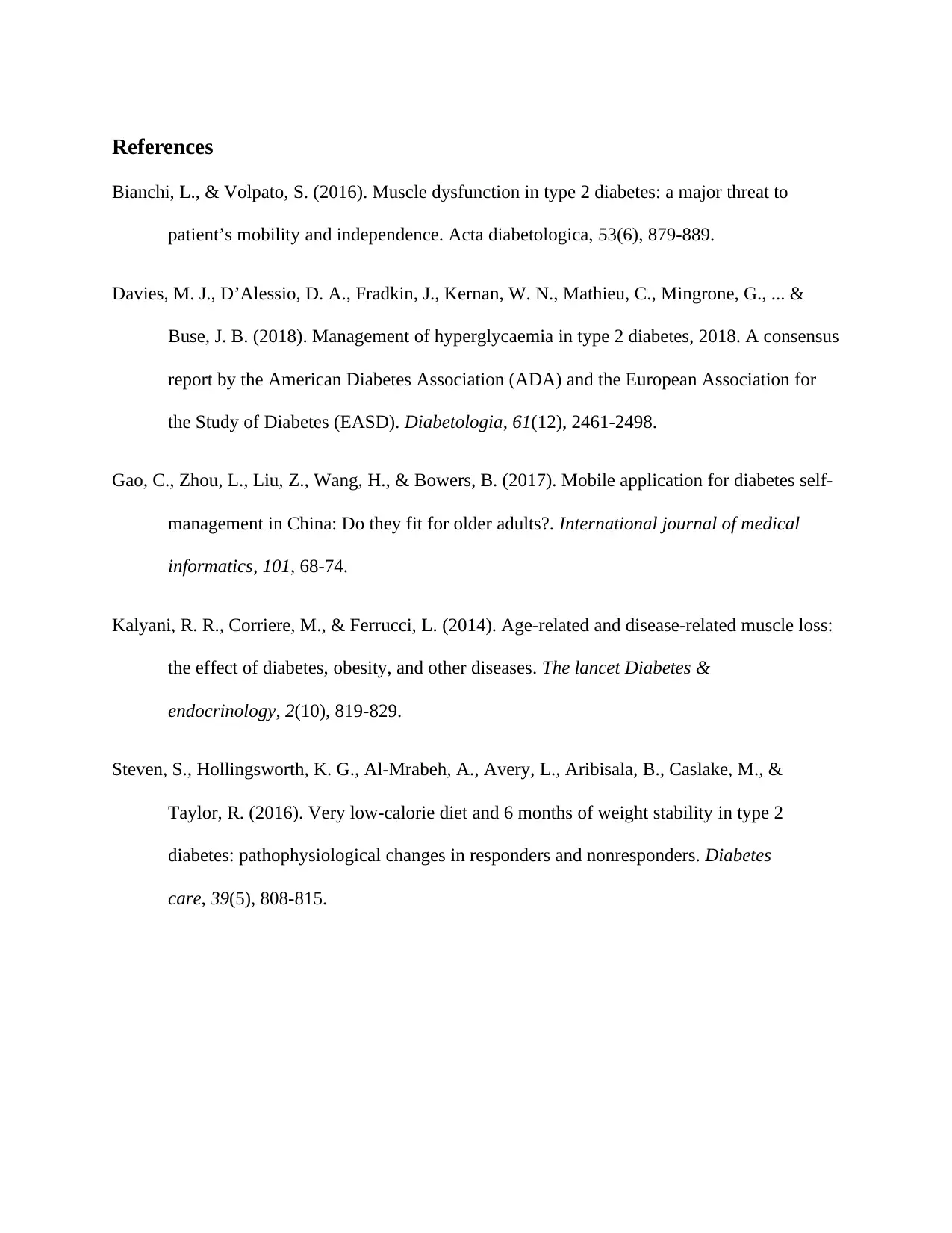Mobile Application for Diabetes: Data Collection Plan Project
VerifiedAdded on 2022/07/28
|5
|940
|28
Project
AI Summary
This project focuses on developing a data collection plan to evaluate the effectiveness of a mobile application program in managing type 2 diabetes in adults aged 40-65. The study compares the American Diabetes Association (ADA) diet with a strict ADA weight-based diet over a three-month period, using mobile applications to monitor dietary intake, physical activity, and blood glucose levels. The data collection plan includes clinical outcomes such as changes in blood glucose levels, dietary updates, and physical activity. Satisfaction outcomes will be measured through exit interviews and feedback forms to assess patient satisfaction with the application. Cost outcomes will be evaluated using frailty scales and disability records. The plan outlines the variables, how they will be defined, measured, and the criteria for success, along with evidence for reliability and validity. The project aims to determine which dietary intervention, supported by a mobile application, is most effective in controlling blood glucose levels and improving overall patient outcomes.
1 out of 5











![[object Object]](/_next/static/media/star-bottom.7253800d.svg)